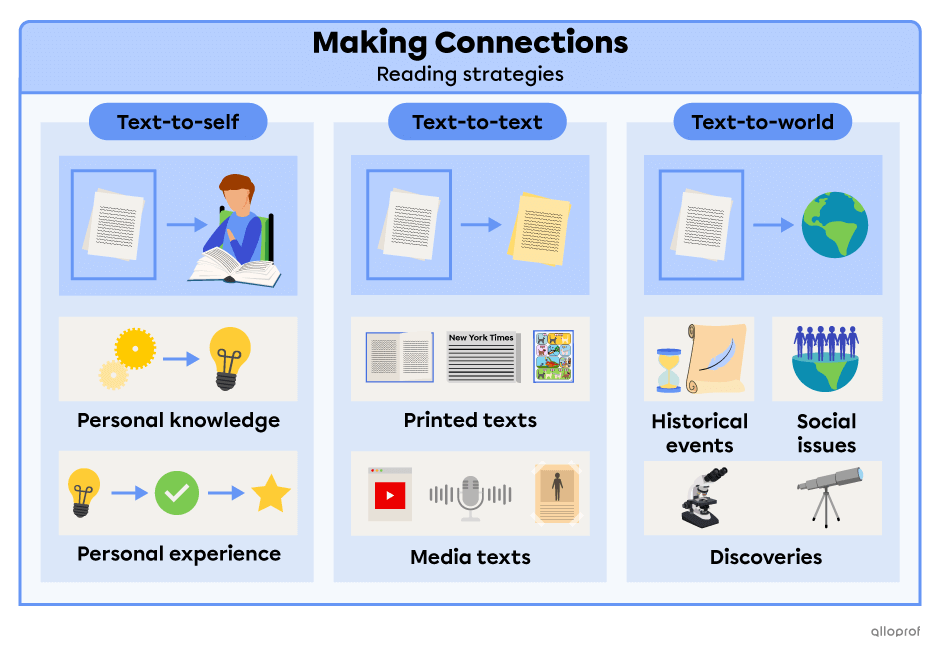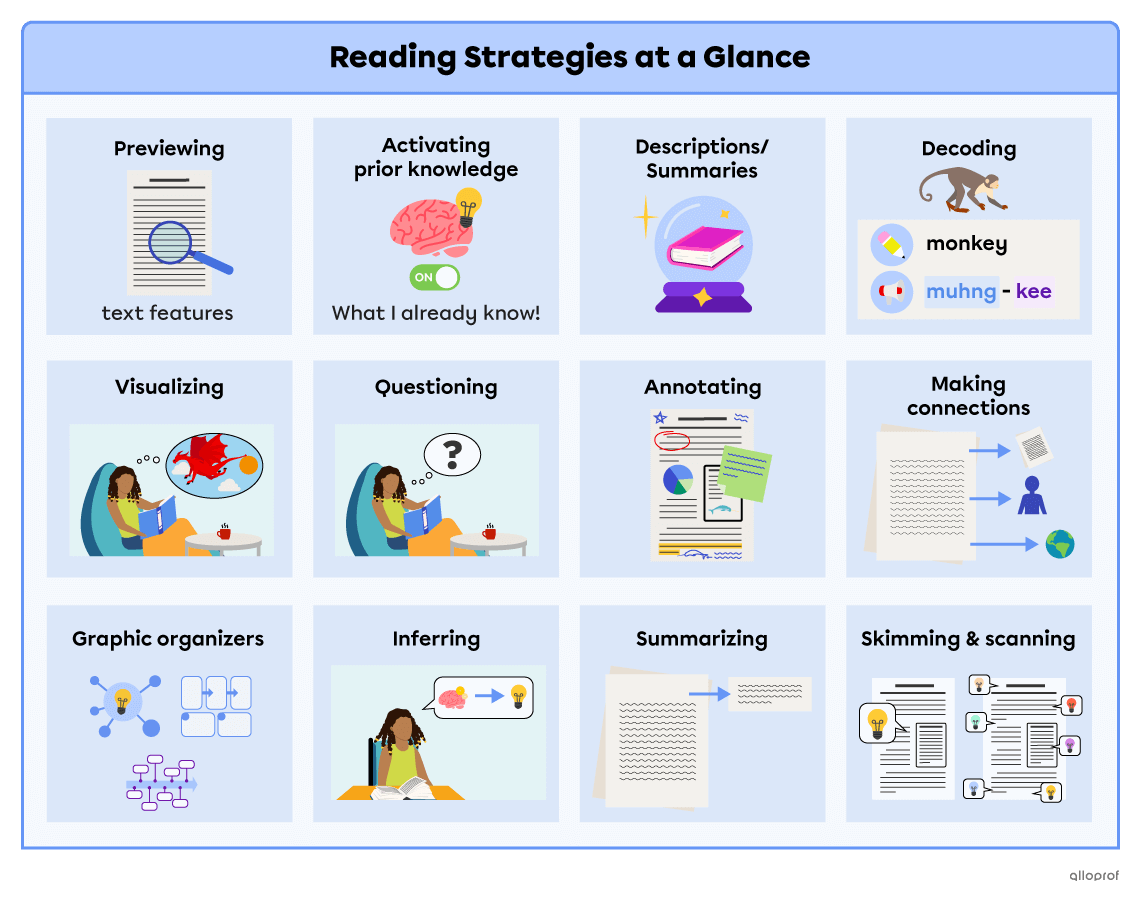Making connections is finding links between the text and:
-
yourself
-
other texts you have read
-
the world around you
There are 3 types of connections you can make.
|
Connection types |
Connecting the text to |
Examples |
|
• your experience |
• something that happened to you |
|
|
• other texts you have read |
• printed texts |
|
|
• the world around you |
• historical events |

Find connections between the text and your personal experience or knowledge.
Here are some suggestions on what to look for.
| Text elements to look at | Personal experience & knowledge to consider | |
| topic | character action/reaction | knowledge of the topic or similar topic |
| main idea | setting | opinion or beliefs about the topic |
| theme | story event | likes/dislikes of the topic |
| information | argument | life events—personal |
| quote | problem/solution | life events—people you know |
| Make connections by looking for | ||
| Familiar | topics/information | |
| settings | ||
| events | ||
| Interesting | information | |
| themes | ||
| main ideas | ||
| Relatable | quotes | |
| character actions | ||
| events | ||
| Similar | topics | |
| events | ||
| experiences | ||
Find connections between the text and other texts you have read.
Here are some suggestions on what to look for.
| Look for similarities or differences in | |||
| topic | main idea | characters | |
| setting | text type | text structure | |
| tone | theme | message | |
| Make connections—compare & contrast | |||
| text’s structures | text’s features | ||
| text’s purposes | text’s themes | ||
| text’s messages | text’s tones | ||
| author’s stances | author’s intentions | ||
| Examples of texts to compare with | |||
| Printed texts | books | ||
| comic books | |||
| magazines | |||
| newspaper | |||
| flyers | |||
| Media texts | movies | ||
| TV shows | |||
| documentaries | |||
| podcasts | |||
| posters | |||
| lectures/presentations | |||
| songs | |||
Find connections between the text and the world around you.
Here are some suggestions on what to look for.
| Text elements to look at | |
| topic | main idea |
| theme | information |
| quote | character action/reaction |
| setting | story event |
| argument | problem/solution |
| Look for similarities in the real-world | |
| historical events | current events |
| social issues | environmental issues |
| economic issues | scientific discoveries |
| new technology | beliefs |
